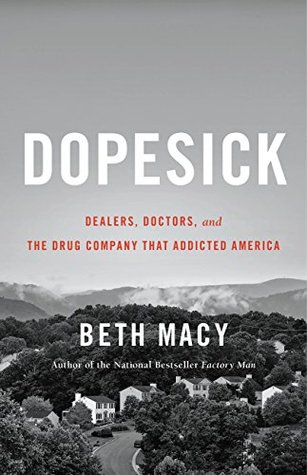More on this book
Community
Kindle Notes & Highlights
by
Beth Macy
Read between
August 8, 2018 - March 28, 2019
It is now the leading cause of death for Americans under the age of fifty, killing more people than guns or car accidents, at a rate higher than the HIV epidemic at its peak.
But in Appalachia, those disparities are even starker, with overdose mortality rates 65 percent higher than in the rest of the nation.
If fat was the new skinny, pills were becoming the new coal.
The addiction was particularly severe among white Southerners in small cities and towns, where heartbroken wives, fathers, and mothers turned to drugs to cope with devastating war fatalities and the economic uncertainty brought on by slavery’s end.
Diacetylmorphine—aka heroin—was more than twice as powerful as morphine, which was already ten times stronger than opium.
But what exactly was adequate pain relief? That point was unaddressed. Nor could anyone define it. No one questioned whether the notion of pain, invisible to the human eye, could actually be measured simply by asking the patient for his or her subjective opinion.
The difference with OxyContin was, it turned them into nonfunctioning people.
The term “hipster,” in fact, drew from the Chinese opium smoker of the 1800s, who’d spent much of his time smoking while reclining on one hip.
Once a person becomes addicted, he loses his power of choice; his free will becomes hijacked along with the opioid receptors in his brain.
When a person’s natural opioids are shut down by the deluge of synthetic ones, she told the audience at the community meeting, it creates a growing tolerance to the drug, making the brain crave ever-larger quantities of opioids just to keep from being violently ill.


